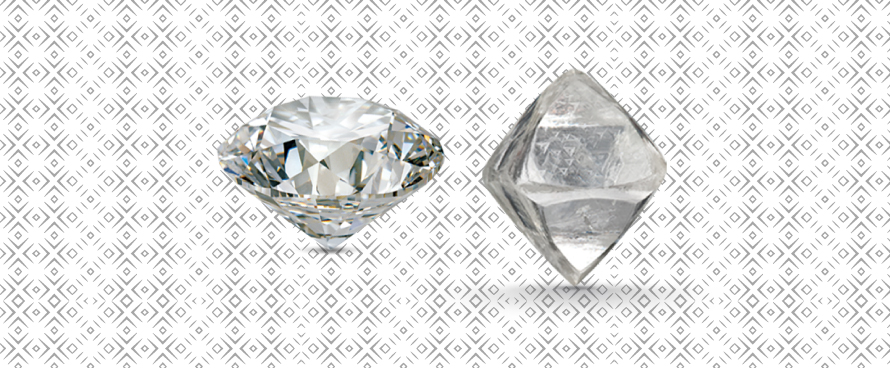From the desk of our Gemologist
It’s spring break season! Many people to want
to leave the cold Michigan weather to go somewhere southern and warm. How about
a trip south into the earth 100 miles where the temperature will be 2,200
degrees? Here is where you would see the beginnings of diamonds.
Diamonds are formed under extreme heat and pressure and they are the only gem
made up of only one element: Carbon. Diamonds are brought up to the earth’s
surface by man or by nature. The earliest mention of diamonds is in 4th century
India where they were gathered next to rivers and streams. Diamonds slowly
started to make their way around the world through trade and discoveries.
The modern diamond industry began in 1866 when diamonds were discovered in
South Africa. De Beers Consolidated Mines Limited was established and they
continue to control the diamond market today.
Diamond mining is a difficult operation. An average diamond mine yields about
1-part diamond to 1 million parts host rock. Miners are constantly trying to
find new ways of mining diamonds. New ways of predicting where diamond deposits
will appear are being made with technology and science.
What should you look for when purchasing a diamond? There are four aspects in
diamond selection: Carat weight, color, clarity, and cut.
Carat. Ancient gem traders used carob seeds to balance their scales when buying stones. From this we get the word “carat” which is the standard unit of gemstone weight. The carat is divided into 100 “points”. For example a diamond weighing exactly one-half carat (.50 ct.) can be described as weighing 50 points.
Color. Most gem quality diamonds appear colorless, but do have a slight, barely visible tint of color when viewed unmounted and under special lighting. The color grade is determined by how close to colorless the diamond is.
Clarity. Most gem quality diamonds contain minor birthmarks, called inclusions. This allows each diamond to be unique, so no two diamonds are the exact same. The clarity grade is determined by the ease with which these natural characteristics can be seen under a microscope.
Cut. Cut refers not only to the overall shape of the diamond (round, princess, etc.) but also the accuracy and precision of the cutting. The cutting quality determines the overall brilliance and beauty of a diamond. A round diamond, for example, has 58 little individually cut and polished planes (facets) that must be in exact alignment and proportion to each other in order to achieve maximum brilliance and fire.
Diamonds are the hardest substance in nature. Their ranking is 10 on the MOHS scale. However, diamonds must be cared for like any
Pictures via gia.edu gem encyclopedia

